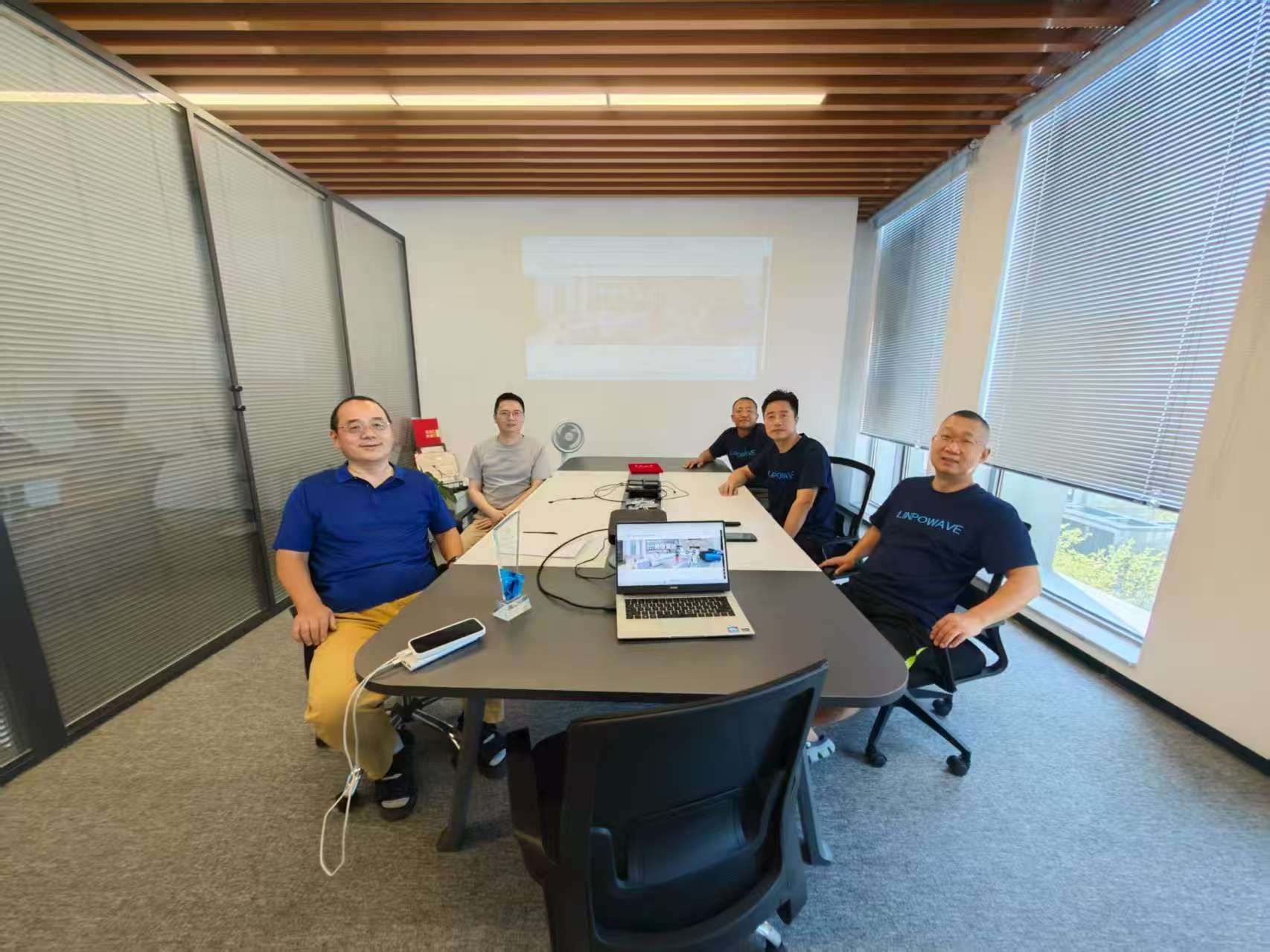By Linpowave Engineering Team | October 2025
Executive Summary
Millimeter-wave (mmWave) radar has moved from research labs into the core of modern automation. It powers level measurement in industrial tanks, navigation in drones, and safety systems in vehicles and smart infrastructure. By operating in the 60–81 GHz range, mmWave radar detects motion, range, and angle with centimeter-level precision—even when light, dust, or rain obscure the view.
This article explains the working principles of mmWave radar, including FMCW operation, range and velocity estimation, and angle detection. It also explores how Linpowave’s integration of radio-frequency and signal processing technologies brings real-world reliability to this advanced sensing method. The discussion concludes with application insights, technical advantages, and answers to frequently asked questions.
1.0 Introduction
The global shift toward intelligent automation has created growing demand for sensors that operate reliably in all conditions. Cameras depend on light; LiDAR is costly and sensitive to weather; ultrasonic sensors struggle with range and resolution. Millimeter-wave radar fills this gap.
Working in the millimeter-band spectrum (wavelengths from 4 mm to 1 mm), mmWave radar combines the long detection range of radio systems with the fine spatial accuracy of optical devices. It measures distance, speed, and direction simultaneously, using reflected electromagnetic waves.
At Linpowave, we design radar systems that integrate the radio front end, analog circuits, digital signal processing (DSP), and microcontroller (MCU) functions in one compact module. This architecture offers stability, accuracy, and scalability for applications ranging from industrial sensing to autonomous mobility.
2.0 How Millimeter-Wave Radar Works
Millimeter-wave radar transmits electromagnetic waves that bounce off targets. The reflected signals carry information about distance (from delay), speed (from Doppler shift), and direction (from phase difference).
Compared to microwave radar, mmWave systems use shorter wavelengths, enabling smaller antennas and higher resolution. Because radar measures phase and frequency rather than intensity of light, it performs consistently in fog, smoke, or darkness—conditions that often limit optical sensors.
A typical radar system includes a transmitter, receiver, antennas, and a signal processor. The transmitter emits a frequency-modulated signal; the receiver captures reflections; and the processor converts them into meaningful data such as range profiles or object trajectories.
3.0 Frequency-Modulated Continuous Wave (FMCW) Operation
Most modern mmWave sensors, including Linpowave’s, rely on Frequency-Modulated Continuous Wave (FMCW) radar. Instead of sending pulses, FMCW continuously emits a “chirp,” a waveform whose frequency increases linearly with time.
When the chirp reflects off an object, the received signal is delayed by a small time interval τ. The difference between transmitted and received frequencies forms an Intermediate Frequency (IF) signal. This IF frequency is proportional to the target’s distance d:
d = (c × τ) / 2
where c is the speed of light.
By transmitting a sequence of chirps and applying a Fast Fourier Transform (FFT) to the IF signal, the radar extracts distance and velocity information for multiple objects.
Linpowave’s sensors optimize this process through precise frequency control, high SNR front ends, and adaptive noise filtering to maintain consistent detection accuracy.
4.0 Range Measurement and Resolution
4.1 Range Determination
The distance between the radar and a target is derived from the frequency difference of the chirp. Longer chirps provide greater sensitivity to small frequency shifts, improving distance precision.
4.2 Range Resolution
The ability to separate two closely spaced objects depends on bandwidth (B):
ΔR = c / (2 × B)
A 4 GHz bandwidth achieves about 3.7 cm resolution. Linpowave uses wideband FMCW modulation to enable fine resolution in confined or reflective environments such as metallic tanks or industrial pipes.
4.3 Range Calibration
Temperature variation and component drift can affect range accuracy. Linpowave sensors employ temperature-compensated oscillators and calibration routines that correct phase drift, ensuring long-term stability for continuous monitoring systems.
5.0 Velocity Measurement and Doppler Processing
When an object moves, the reflected frequency shifts slightly due to the Doppler effect. By transmitting multiple chirps in sequence and comparing their phase differences, the radar calculates relative velocity:
ΔV = λ / (2 × Tₓ)
where λ is the wavelength and Tₓ is the frame time.
Velocity analysis uses a second FFT—often called the Doppler FFT—which converts phase changes across chirps into velocity bins.
Linpowave combines Doppler analysis with motion-tracking algorithms to handle multiple moving objects in real time. This capability is critical for traffic monitoring, industrial robotics, and collision-avoidance systems.
6.0 Angle of Arrival (AoA) and Spatial Awareness
To determine the direction of a target, Linpowave uses multiple receive antennas spaced by a known distance. When a wavefront hits the array, each antenna receives it with a slightly different phase. By measuring this phase difference, the radar estimates the Angle of Arrival (AoA).
The relation between antenna spacing (dₐ) and phase difference (φ) is:
sin θ = (λ × φ) / (2 π × dₐ)
where θ is the incident angle.
AoA estimation creates 2D or 3D point-cloud maps for advanced perception tasks. Linpowave’s antenna arrays are optimized for both near-field and far-field detection, supporting drones, smart intersections, and factory robots with consistent angular precision.
7.0 Radar Signal Chain and Processing Pipeline
A Linpowave mmWave sensor typically includes:
-
RF Front End – generates chirps, amplifies, and downconverts signals.
-
Analog Baseband – filters and digitizes the IF signal.
-
Digital Processing Unit – performs range and Doppler FFTs.
-
Angle Estimation Engine – computes AoA using phase correlation.
-
Application Layer – applies tracking, clustering, and classification algorithms.
To handle complex environments, Linpowave integrates edge-computing capabilities within the module, reducing reliance on external processors. This results in low-latency operation suitable for high-speed control systems.
8.0 Sources of Error and Mitigation
8.1 Multipath Reflections
Reflected signals from walls or machinery can interfere with direct paths. Linpowave mitigates this through time-gating and spatial filtering.
8.2 Thermal Noise and Phase Drift
Thermal noise affects low-amplitude reflections. Temperature-compensated calibration ensures stable operation in harsh environments.
8.3 Cross-Talk Between Sensors
When multiple radars operate nearby, interference may occur. Linpowave employs time-division and frequency-hopping techniques to minimize cross-channel noise, allowing multiple units to work in the same space.
9.0 Applications Across Industries
9.1 Industrial Automation
Non-contact liquid-level monitoring, conveyor tracking, and collision prevention in manufacturing lines.
Reliable even in environments with steam or dust, Linpowave sensors ensure consistent measurement where optical or ultrasonic sensors fail.
9.2 Smart Transportation
Deployed in traffic monitoring and V2X systems, Linpowave radar detects vehicles and pedestrians with high precision. It supports smart intersections and adaptive traffic control systems.
9.3 Drones and Robotics
For drones, mmWave radar enables terrain following, altitude hold, and obstacle avoidance. In industrial robots, it supports human safety zones and autonomous navigation.
9.4 Smart Infrastructure
Radar-based motion detection powers intelligent lighting, automatic doors, and energy-efficient buildings. Because mmWave radar works in darkness and through non-metallic materials, it is ideal for 24/7 occupancy sensing.
Explore more examples at Linpowave Solutions.
10.0 The Linpowave Advantage
Linpowave’s core innovation lies in integration. Traditional radars use multiple discrete components, while Linpowave combines RF transceivers, DSP, and MCU into one compact module. This design achieves:
-
High signal-to-noise ratio (SNR)
-
Real-time edge computing
-
Flexible range, velocity, and angle configuration
-
Low power consumption for continuous use
Operating in both 60–64 GHz and 76–81 GHz bands, Linpowave radars comply with ETSI, FCC, and CE standards. The development kit and SDK allow engineers to visualize radar data, tune parameters, and deploy customized algorithms efficiently.
11.0 Future Outlook
As demand for automation grows, radar sensing is expanding beyond vehicles into logistics, healthcare, and environmental monitoring.
Next-generation Linpowave modules will integrate AI-based object classification and advanced signal compression, reducing data bandwidth while maintaining high accuracy.
Combined with cloud analytics and IoT connectivity, mmWave radar will play a central role in the next era of intelligent perception.
Frequently Asked Questions (FAQ)
Q1. What makes millimeter-wave radar different from ultrasonic or infrared sensors?
It uses high-frequency electromagnetic waves that penetrate fog, dust, and smoke. Ultrasonic and infrared sensors often lose accuracy in such conditions. mmWave radar also measures velocity and direction, not just presence.
Q2. How accurate is Linpowave’s mmWave radar?
Accuracy depends on bandwidth and antenna design. With wideband FMCW modulation, Linpowave radars achieve centimeter-level distance resolution and sub-degree angular precision.
Q3. Can mmWave radar operate through materials like glass or plastic?
Yes. Non-metallic materials such as glass or plastic allow mmWave signals to pass with minimal loss, making it suitable for enclosed or sealed environments.
Q4. Is mmWave radar safe near people?
Absolutely. The emitted power is far below regulatory exposure limits—lower than most Wi-Fi routers—and meets international safety standards.
Q5. How does Linpowave minimize interference in crowded environments?
By using adaptive filtering, frequency planning, and time-division multiplexing, Linpowave enables multiple radars to function side by side without mutual interference.
Q6. Which industries benefit most from Linpowave radar?
Industries include manufacturing, transportation, robotics, drones, and smart infrastructure—anywhere precise sensing is required.
Q7. How can developers start using Linpowave radar technology?
Evaluation kits, SDKs, and APIs are available for rapid prototyping. Engineers can configure chirp parameters, visualize range-Doppler maps, and integrate radar data into existing systems.



